
Mechanical_Intro_14.5_L04_Meshing
.pdf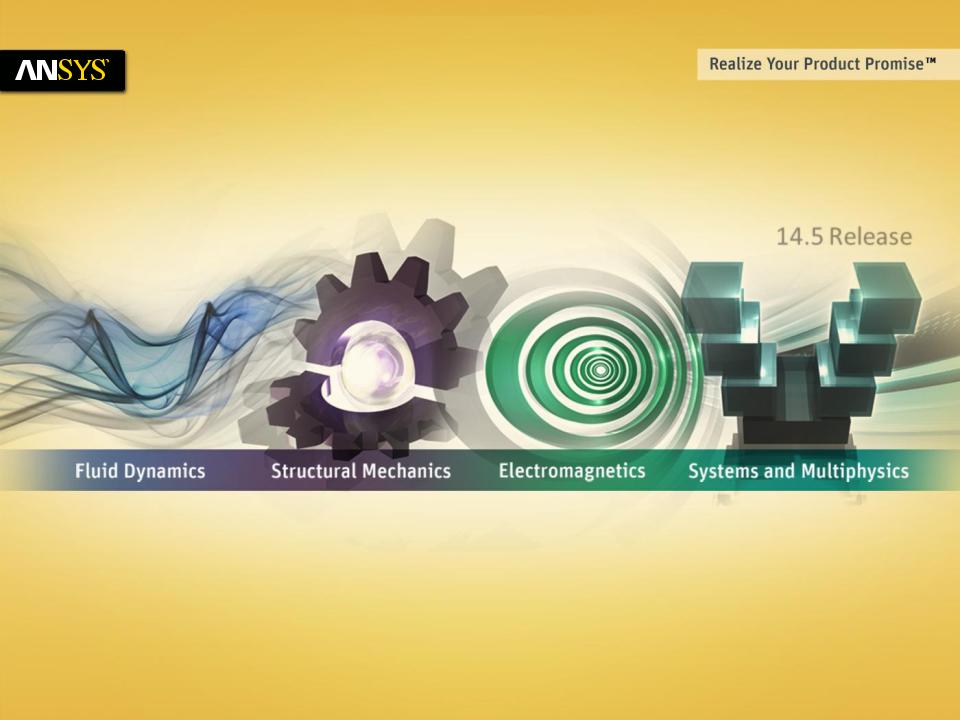
Lecture 4
Meshing Techniques
14.5 Release
Introduction to ANSYS Mechanical

 Chapter Overview
Chapter Overview
In this chapter controlling meshing operations is described.
Topics:
A.Global Meshing Controls
B.Local Meshing Controls
C.Meshing Troubleshooting
D.Virtual Topology
E.Workshop 4.1 – Mesh Control
F.Submodeling
2 |
© 2012 ANSYS, Inc. |
December 19, 2012 |
Release 14.5 |

 Meshing in Mechanical
Meshing in Mechanical
The nodes and elements representing the geometry model make up the mesh:
•A “default” mesh is automatically generated during a solution.
•It is generally recommended that additional controls be added to the default mesh before solving.
•A finer mesh produces more precise answers but also increases CPU time and memory requirements.
Generate the mesh or preview the surface of the mesh before solving (previewing the surface mesh is faster than generating the entire mesh).
3 |
© 2012 ANSYS, Inc. |
December 19, 2012 |
Release 14.5 |
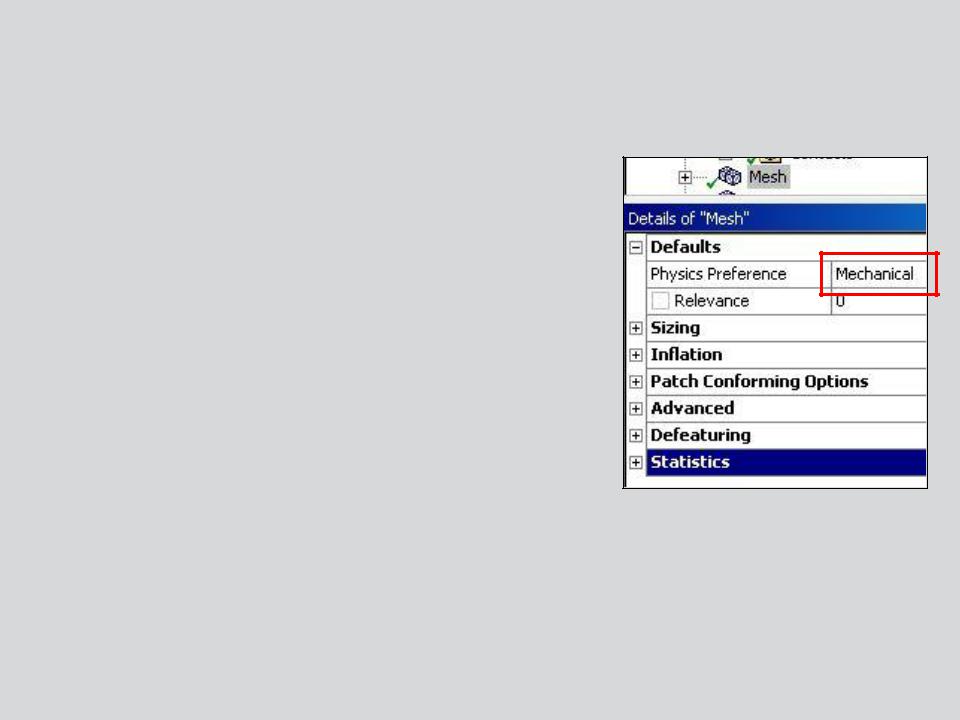
 A. Global Meshing Controls
A. Global Meshing Controls
Physics Based Meshing allows the user to specify the metrics used in measuring element quality to be based on the kind of analysis being done.
Physics preferences are:
•Mechanical
•Electromagnetics
•
•
CFD
Explicit
Different analysis types define acceptable or favorable element shapes differently. For this course we limit the discussion to Mechanical.
4 |
© 2012 ANSYS, Inc. |
December 19, 2012 |
Release 14.5 |
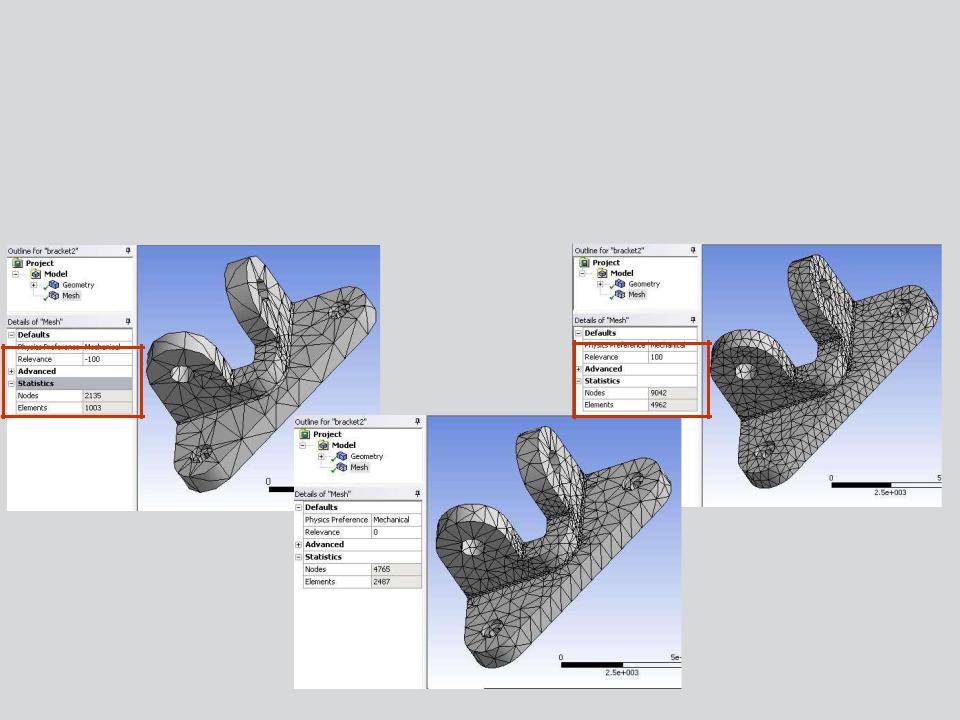
 … Global Meshing Controls
… Global Meshing Controls
•Relevance is the most basic global size control and is set in the “Defaults” area of the mesh details.
•Relevance is set between –100 and +100 (zero = default).
- Relevance = coarse |
|
+ Relevance = fine |
|
mesh |
|
mesh |
|
|
|
||
|
|
5 |
© 2012 ANSYS, Inc. |
December 19, 2012 |
Release 14.5 |
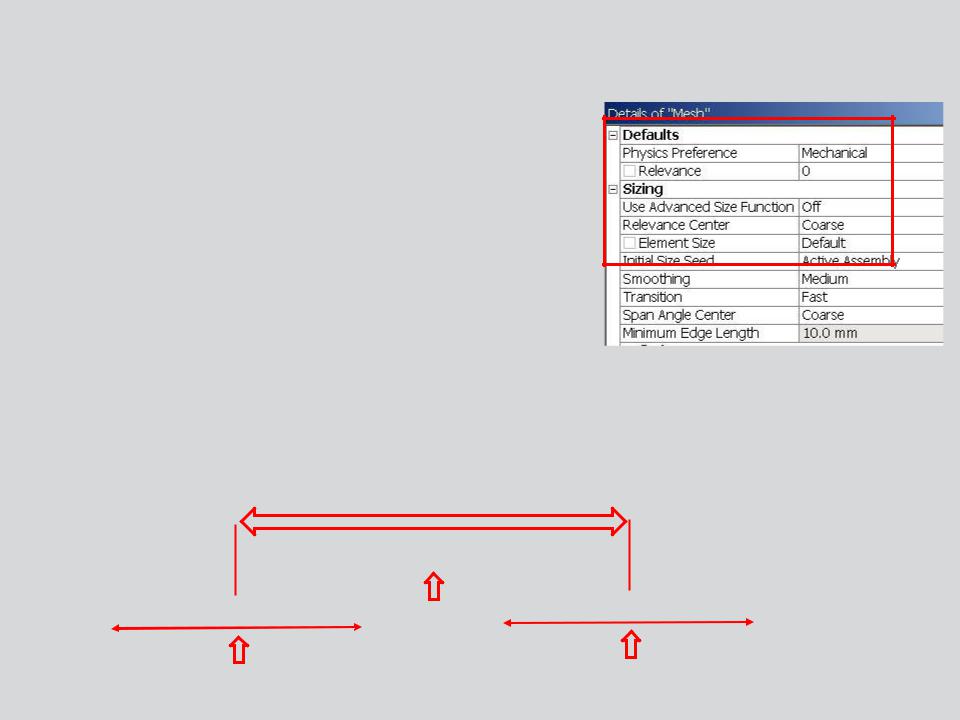
 … Global Meshing Controls
… Global Meshing Controls
Sizing Control:
•These settings assume the “Use Advanced Size Function” is set to “Off”.
•Relevance Center: sets the mid point of the “Relevance” slider control.
•Element Size: defines the maximum element size used for the entire model.
•For most static structural applications the default values for the remaining global controls are usually adequate.
Relevance Center
Medium
Coarse  Fine
Fine
|
0 |
|
0 |
|
-100 |
+100 |
|
-100 |
+100 |
6 |
© 2012 ANSYS, Inc. |
December 19, 2012 |
Release 14.5 |
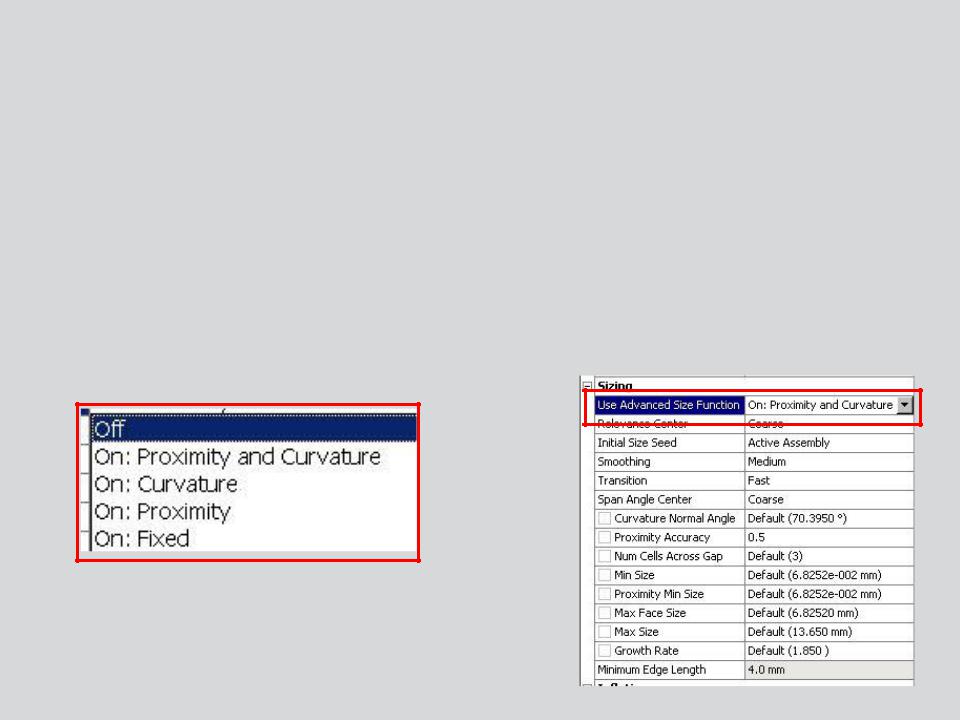
 … Global Meshing Controls
… Global Meshing Controls
Advanced Size Functions provide additional control over the global mesh sizing and are activated in the mesh details.
•While many of these controls are beyond the scope of an introductory course we’ll explain some of the advanced size controls here. As stated earlier linear static analysis types usually do not share the same meshing demands as more advanced analysis types (e.g. nonlinear, transient thermal, etc.).
•Three advanced size functions can be employed: proximity, curvature and fixed (proximity and curvature can be combined).
7 |
© 2012 ANSYS, Inc. |
December 19, 2012 |
Release 14.5 |
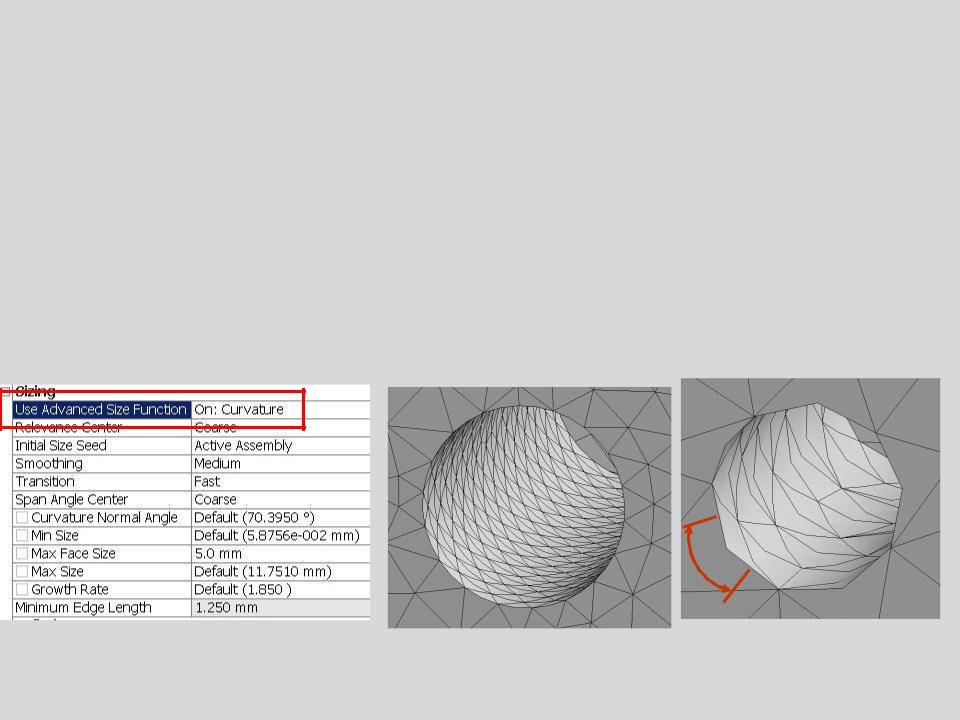
 … Global Meshing Controls
… Global Meshing Controls
The “Fixed” size function provides minimum and maximum element size controls.
“Curvature” as the name implies, is driven by the curvature encountered in the geometry. For models dominated by lots of curved features this control provides a way to refine the mesh over much of the model without using local controls.
For models composed of mostly linear features the control will have a lesser impact.
Curvature = 20 deg. |
Curvature = 75 deg. |
|
8 |
© 2012 ANSYS, Inc. |
December 19, 2012 |
Release 14.5 |

 … Global Meshing Controls
… Global Meshing Controls
Proximity provides a means to control the mesh density in regions of the model where features are located closer together. In cases where the geometry contains lots of detail this can be a quick way to refine the mesh in all areas without applying numerous local controls.
As mentioned earlier proximity and curvature can be combined. The choice of control is dictated by the geometry being meshed.
Num Cells = 2 |
Num Cells = 5 |
9 |
© 2012 ANSYS, Inc. |
December 19, 2012 |
Release 14.5 |
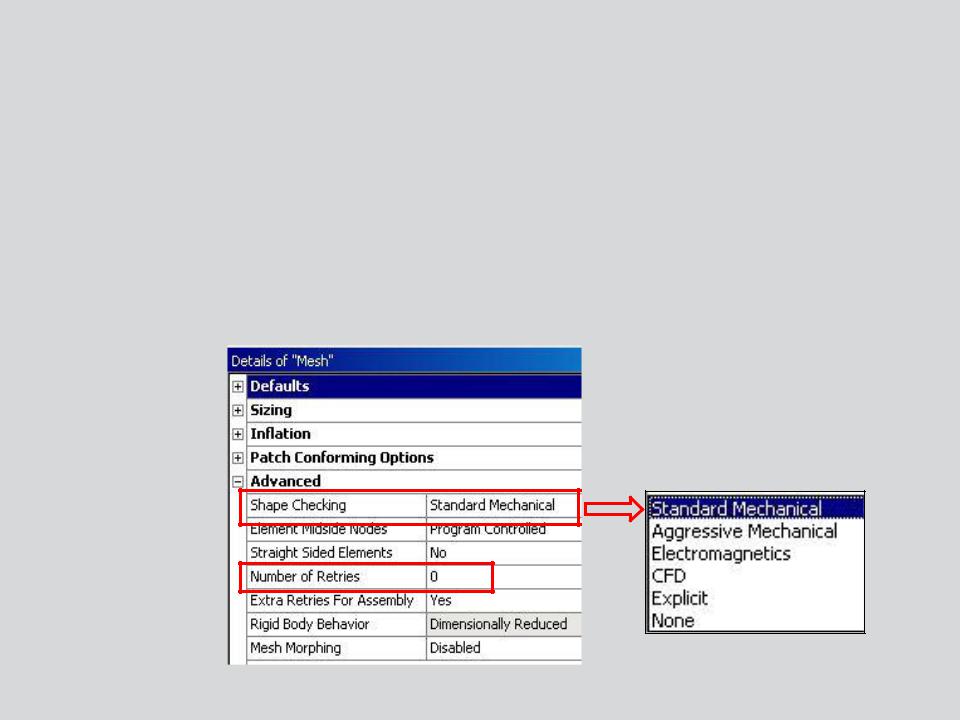
 … Global Meshing Controls
… Global Meshing Controls
Again some of the advanced mesh settings are beyond the scope of the introductory course or apply to other physics. Several controls have potential application in linear static analysis.
Shape Checking:
•Standard Mechanical – linear stress, modal and thermal analyses.
•Aggressive Mechanical – large deformations and material nonlinearities.
•Number of retries: if poor quality elements are detected the mesher will retry using a finer mesh.
10 |
© 2012 ANSYS, Inc. |
December 19, 2012 |
Release 14.5 |
